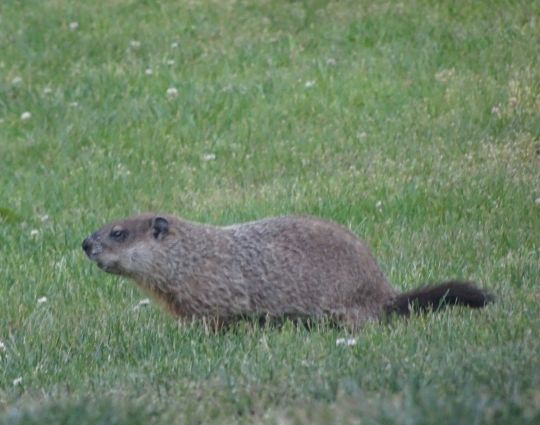As January ends and all of us feel weary of winter, we look towards February 2, Groundhog Day, to see how many more weeks of cold we must endure. These little prognosticators are celebrated in many localities, although the most famous is Punxsutawney Phil in Punxsutawney, PA. The first official Groundhog Day was celebrated here in 1887 and continues annually.
-
- Groundhogs are rodents and are the largest species in the Squirrel family, ranging from 17 to 24 inches.
- They are sometimes referred to as woodchucks, whistle-pigs, and land-beavers.
- They can dig complex burrow systems up to 700 feet long and 20 feet deep with different chambers for sleeping, and the bathroom and as many as 12 entrances or escape routes.
- Groundhogs are one of the true hibernators, fattening up for a three-month sleep during the colder months.
- The heart rate of a groundhog during hibernation slows down from 80 beats per minute to just 5 beats per minute.
- Breathing slows from 16 breaths per minute to just 2!
- During hibernation, a groundhog’s body temperature drops from 99 degrees to 37 degrees.
- At a dead sprint, groundhogs reach a maximum speed of 8 mph…. No match for a hungry fox that can hit 25 mph!
- Boy groundhogs pop their head up in February and emerge from their dens to wander around looking for female burrows. Mating doesn’t happen at this time; it’s just the “getting to know you” phase, and the guy might spend the night hanging out. When spring comes around, successful dates get to mating. Groundhogs are otherwise solitary animals.
- A groundhog’s teeth grow a sixteenth of an inch each week to accommodate its endless appetite and frequent chomping away at every garden vegetable (as the Sheldrake Giving Garden can attest) and forest plant it can find.
Happy Groundhog Day to all. I consider it the best “holiday,” as it is also my birthday. So whether the groundhogs pop up and see their shadow or not, I hope the remaining weeks of winter are mild for us all and the remaining weeks of winter are spent enjoying time and activities with loved ones.
We are fortunate to live in an area with changing seasons. Not only does each season have much to offer us, but it also makes us appreciate the following one more. I look forward to the emerging signs of spring, snowdrops, crocuses, and buds everywhere. Keep your senses attuned, and take a walk on Sheldrake’s trails; nature is beautiful and all around us.
Yours in nature,
Jennifer Keefe
Executive Director
Sheldrake Environmental Center

